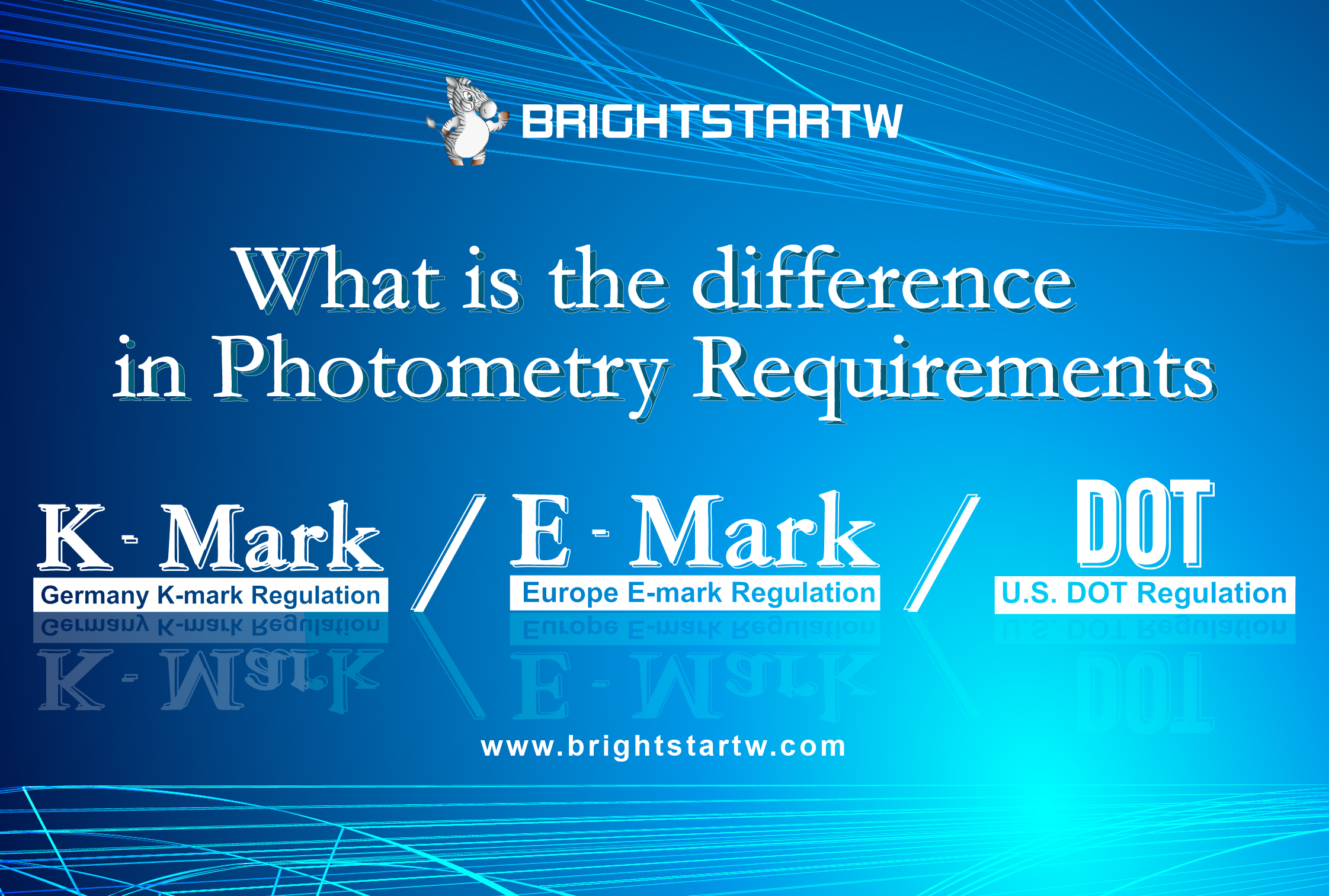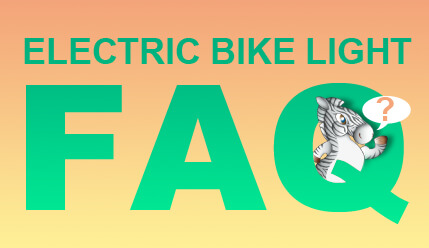DOT Compliant & E-MARK & K-MARK – What is the difference?
DOT Compliant & E-MARK & K-mark are well known to the public when we talk about Two-wheel vehicle lighting regulations.
(1) Germany K-mark Regulation
(2) Europe E-mark Regulation
(3) U.S. DOT Regulation
K-mark:
StVZO 22A is the testing standard for Germany Bicycle Lamp.
The low beam in the K-mark regulation still requires a cutoff line but with less brightness and narrower lateral extension.
We make an easy-to-read chart showing the regulatory light beam requirements according to the data for Germany Bicycle light standards!

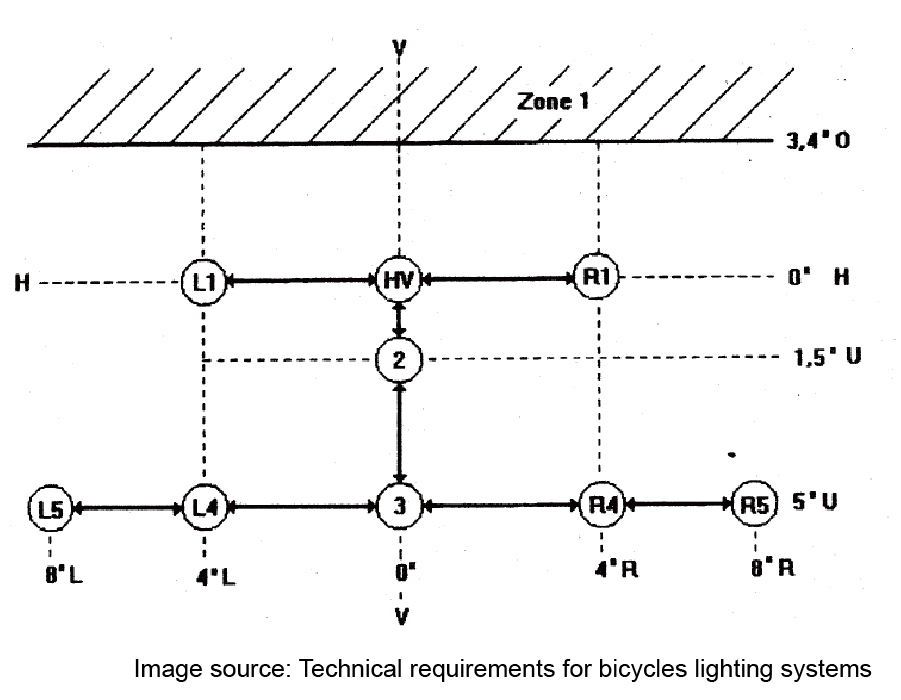
E-mark:
UN ECE R113/R149(Class A, B, C, D) are the testing standard of European motor vehicle headlamps.
E-mark proves your vehicle or component complies with the relevant EU/ECE regulations and can be sold in the EU, as well as other regions which have signed up to the ECE vehicle regulations and Avoid product recalls and loss of sales revenue.
Below is the regulatory light beam requirements according to the data for European Motor Vehicle Class B headlamps standards!
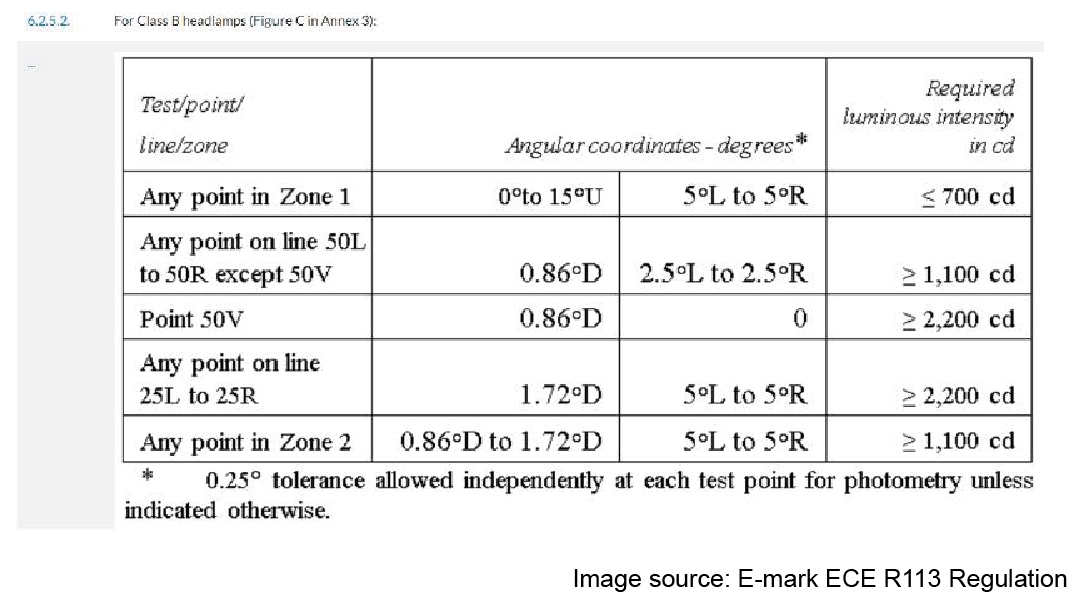
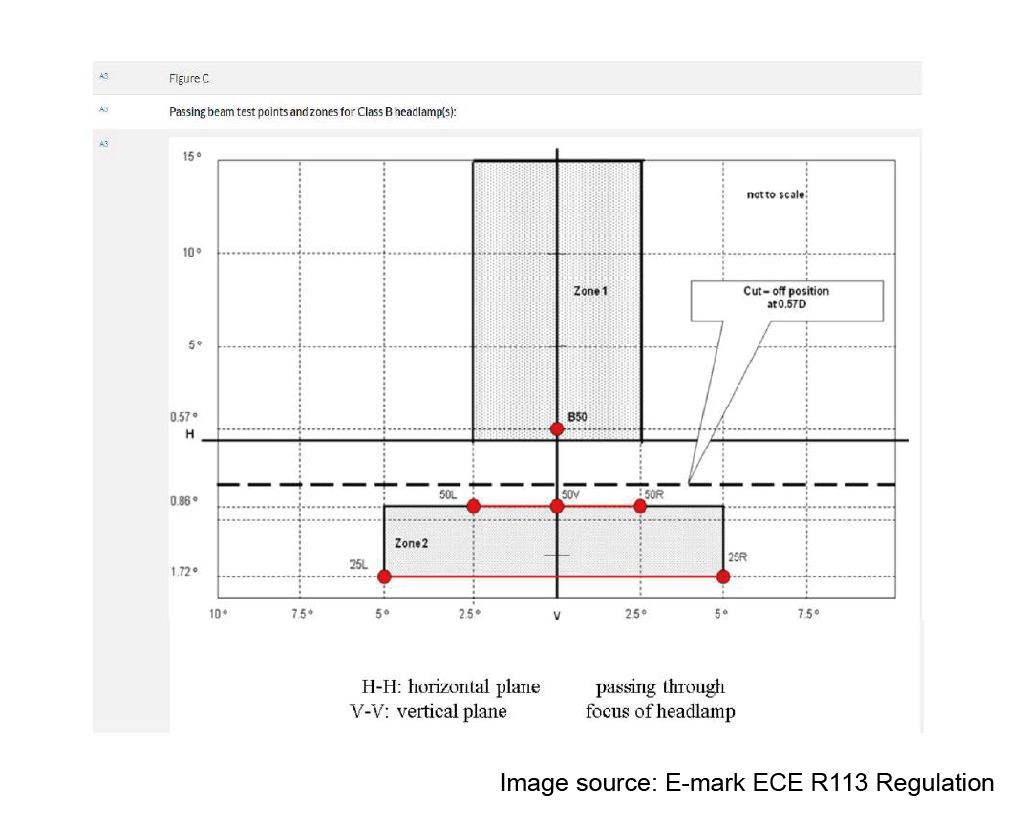
DOT Compliant:
Headlights printed with “DOT” simply indicate that they (manufacturer) comply with the Lighting DOT (FMVSS) standard 108 (571.108).
FMVSS 571.108 is the Standard No. 108; Lamps, reflective devices, and associated equipment.
Below is Motorcycle and Motor Driven cycle headlight photometry requirements.
We make an easy-to-read photo showing the regulatory light beam requirements according to the data for DOT standards!
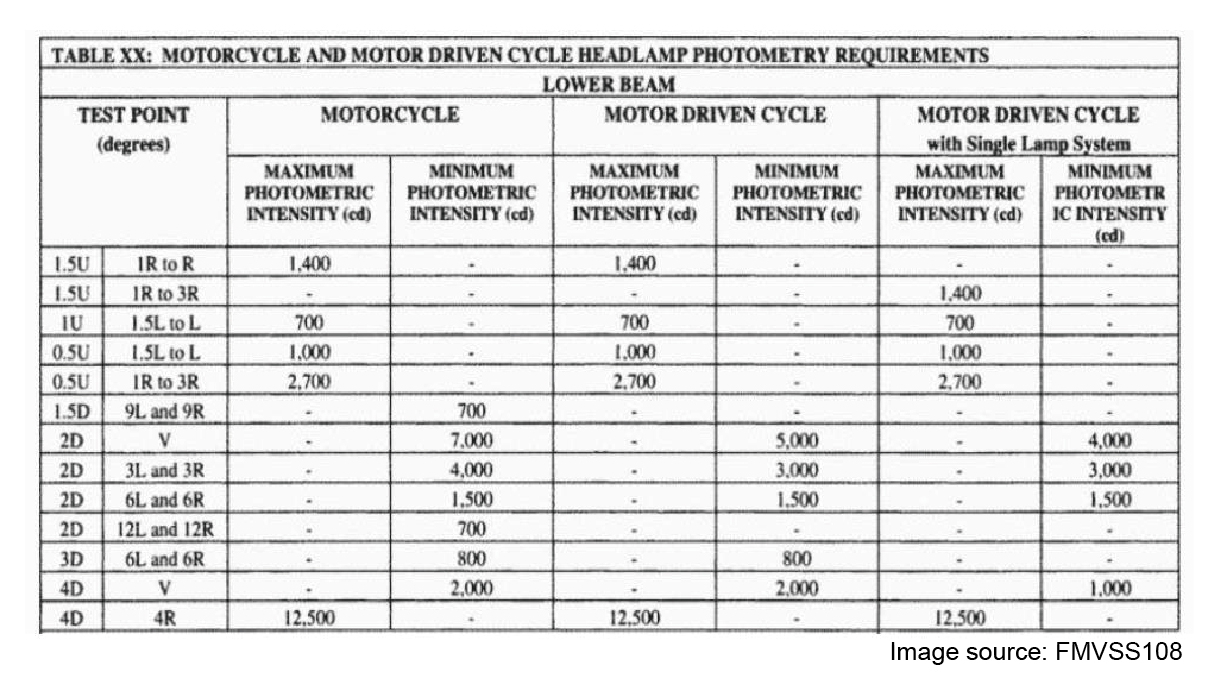

Conclusion
Lights passed UNECE R113 / R149 or FMVSS 571.108 approved are compliant with the stricter Requirements in the Testing Distance & the Brightness & Photometric Distribution than K-mark.
Street-Legal EU and US Motor Vehicle Light required luminous intensity in cd.
K-mark lights for low speed bicycle use and torch , by contrast, require luminous intensity in lx.
Below we also enclose the insightful explanation about the difference between cd and lux by ChatGPT.
In summary, candela measures the brightness of a light source in a specific direction, while lux measures the amount of light that reaches a surface or area. Lux depends on both the luminous intensity of the light source and distance from the source to the surface being illuminated.
Kindly feel free to let us know if you have any opinion ([email protected]), welcome to contact us. We will be happy to hear various technical opinions! See you around!


